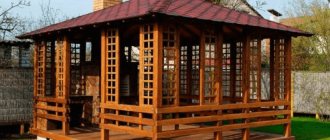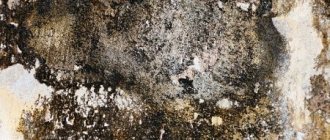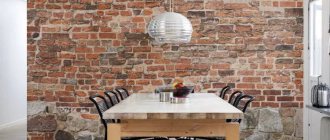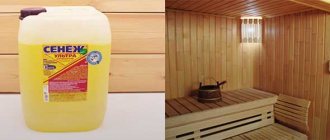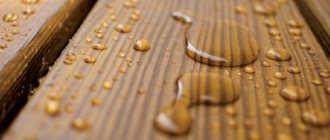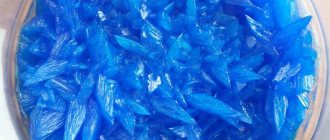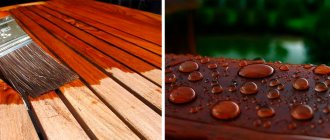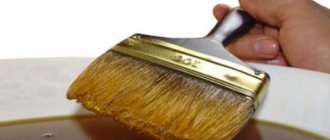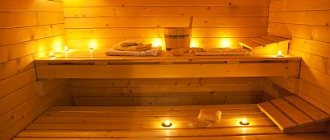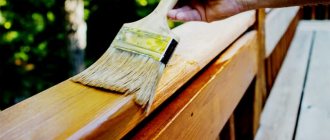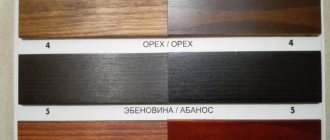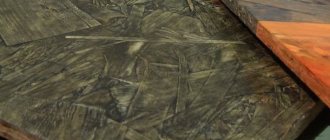Wood is the traditional, main material for flooring, despite its inherent disadvantages. Its structure is based on organic substances: this makes wood less resistant to destructive factors compared to other types of building materials. In addition to oxidation, and both metals and concrete are susceptible to this process, wood fibers are threatened by biological organisms, sunlight, water, and fire. To extend the service life of structures, builders make certain efforts aimed at improving the operating conditions of wooden parts or giving them new properties.
Types of structures made of natural wood
Since any type of tree is a material that can easily rot, the question remains relevant: “How to treat floor joists?”
As mentioned above, moisture does not get under the flooring from the external environment, but it is present there. This means that condensation is accumulating under the floor surface. The reason for this phenomenon lies in the difference in air temperatures between the room and the basement below it. However, the difference between them can be significant.
All this means that treating wooden joists is really necessary. In addition to rotting, wood is a favorable breeding ground for various insects that can completely destroy the wooden floors of a building. This should not be allowed. Pests need to be destroyed.
There is no perfect solution for how to treat underfloor joists. The choice largely depends on the type of wood that was used to install the floor structure. The water environment can affect each wood species differently. The fact is that the microclimate in the floors of each of the constructed houses has its own characteristics, and they depend on many parameters.
Where houses are built, the climatic conditions, as well as the soil and air humidity, differ. Solving the problem of how to impregnate the logs should be approached responsibly.
Material safety
When choosing impregnation for lags, you need to take into account that at home it is permissible to use only safe compounds. Thanks to this, the wood will be protected from insects, and the health of the people living in the house will not suffer. When purchasing a chemical, you should familiarize yourself with the components included in its composition.
Based on the above information, it is clear that today there are several options available for processing natural wood logs. All of them help solve problems associated with insects - pests and microorganisms that cause decay processes. Both of these activities must be carried out without fail. If such requirements are neglected, then over the next 5 years the floor will become unusable, and repairs will require significant financial costs.
DIY floor made of wooden material
Making a wooden floor has its own technology:
- Wood preparation.
- Arrangement of sheathing.
- Laying insulation.
Second or third grade wood can be used as subfloor beams. Those sides of the beams on which the flooring will be laid should be leveled.
You can install logs in two ways: on the floor or on the base.
According to the first method, it is necessary to lay the logs of the lower trim and make grooves in them in those places where the logs of the upper trim will be laid. The depth of the grooves is equal to the width of the upper beams.
The harness must be securely installed. To do this, make brick columns that will serve as support for the logs.
The installation of the posts is carried out at the initial stage of the subfloor. This design is also called a “column foundation”. The technology is like this:
- Along the line of the ceilings, holes are dug at the same distance from each other. Pit size: 20x20x40 mm.
- Layers of gravel and sand are poured onto the bottom, compacting well. Then lay the reinforcing mesh.
- The holes are filled with sand-cement mortar. Cement, sand and water are taken respectively in the following proportions: 1: 3: 0.5.
- Roofing felt is laid on the hardened concrete.
- Brick columns are built.
The distance between the logs depends on the thickness of the wood material: the thinner the timber, the closer the logs are located. The laid beams must be secured to each other.
Installing a log “at the base” involves removing the top layer of soil and filling the surface with small crushed stone. Overlapping logs are laid on the resulting base, as in the previous version.
A waterproofing film is laid on the lower base, and a layer of insulation is laid on top.
At this stage it is necessary to decide on the finishing coat. If it is sheet material of chipboard, then before laying it it is recommended to make a sheathing of transverse bars, which are secured to supports.
Sheets of flooring are laid on the sheathing so that their joints are located in the center of the lintels.
Basic requirements for floor screed
In order for the screed to perform its main functions 100 percent, it must meet certain standards and requirements. Below are the most important ones.
Requirements for floor screed
- The material for the screed must be of the highest quality and strength so that the finished surface can withstand the established loads.
- The thickness of the constituent substance should be the same thickness over the entire surface.
- When making a screed on a sound insulation layer, you need to comply with the main requirement: the filling layer must be thick enough.
- If communications are hidden in the floor, then the screed in this case should be at least 2 cm thicker than the installed pipes.
- When pouring the mixture onto the soundproofing layer, it is necessary to retreat from the edges of the wall by about 4-5 cm. The resulting void will eventually be filled with soundproofing material.
Requirements for self-leveling floor baseTreatment of screed surface
How to cover the floor in the bathhouse? The development of pathogenic flora in a “damp” room can be prevented with the help of special anti-rot compounds. Manufacturers of protective products produce various varnishes and impregnations, but not all of them have the necessary range of properties that would guarantee the absence of rot in the wood.
What properties should a high-quality impregnation have?
- Water repellent. It is water that makes wooden joists and boards vulnerable to pathogens. To prevent their development, the wood must be kept dry. To do this, use products that, after application, form a protective non-hygroscopic film on the surface of the floor and wall;
- Antiseptic. The composition of the impregnation must necessarily include antiseptic components (phytoncides). They prevent the proliferation of fungal spores and mold formation;
- "Repellent." Wood does not always suffer from rotting. Wood-boring insects can also cause damage to the coating. To prevent their appearance, you can use special formulations that contain insect repellent substances.
The role of the screed cannot be underestimated, since it simultaneously serves several functions, from leveling the surface to masking communications. Let's consider the main functions separately. Why do you need a floor screed Functions of a floor screed To lay floor coverings, for example, laminate or parquet, you need a perfectly flat base, which can be obtained thanks to a high-quality screed. In addition, a flat floor surface will greatly facilitate the process of arranging furniture in the house, because when rearranging or buying, for example, a sofa, you will not need to spend a lot of time and effort setting the height of the legs. The need for this process will immediately disappear.
Leveling the concrete screed rule
Base insulation
The presence of an additional layer between the floor and the fill ensures reliable sound, hydro and thermal insulation of the room
Insulating properties of floor screed
Slope formation
When screeding, you can make smooth slopes for transitions between different areas of the room. Also, such a slope is necessary for a complete outflow of water. Concrete screed with a slope If during repairs you need to hide wiring or pipes, for example, when installing a heated floor, then this can also be done thanks to a screed. Of course, before starting work, all elements must be insulated. Installation of screed on heated floors
They are classified according to several criteria, for example, by the method of adhesion and installation, as well as by the base material used. It is impossible to say with certainty which type of screed is the best, because they are all designed to solve specific problems. Types of floor screeds
Screeds are classified according to the characteristics of the connection with the foundation into floating and connected. There is another variety - using a separating layer. The floating type is installed on insulation, so it does not come into contact with the walls. The bonded screed, in turn, is placed on the floor, and adhesion is achieved through the adhesion of the materials. Self-tapping screws are most often used to fix beacons.
Composition of a typical floating screed When choosing a screed method with a separating layer, an additional layer of insulation is required. The screed itself is in contact with the walls of the room, which cannot be said about previous methods. This contact occurs along the entire perimeter of the room. Cohesive wet screed
By installation method
Floor screeds are also classified according to the installation method. There are several basic screed methods:
- self-leveling;
- national team;
- semi-dry;
- solid.
Self-leveling floor screed
When performing self-leveling installation, a gypsum or cement composition is used, which is mixed with special fillers. The prepared mixture is carefully applied to the base of the floor, thereby creating an even coating. The advantage of this method is that subsequent manual alignment is not necessary.
Dry prefabricated screedThe semi-dry method involves using a thicker composition using a small amount of liquid. Thanks to this, the surface dries much faster. The addition of polymer substances helps to increase the strength of the finished screed. The most popular variety is a solid screed. It strongly resembles a conventional self-leveling floor, consisting of a leveling and finishing layer. Solid screed The type of binder used for the base of the screed affects its service life. Therefore, if a two-layer coating is used for the screed, then first you need to become familiar with the features of these materials and their compatibility. As a rule, a mixture made from sand and cement is most often used for screeding. The result is a durable material that has a large number of advantages. Sand-cement floor screed from 5 to 10 cm The main advantages of such a pour:
- versatility of the material - it is effective for different coatings;
- strength and long service life of the screed;
- ease of installation;
- ease of preparing the filling.
Cement-sand screed without beacons
Of course, the solution also has disadvantages. The main ones include:
- risk of chips and cracks;
- the need to control the moisture content of the mixture during the setting period;
- long ripening period;
- the need to lay additional layers;
- quite low level of sound insulation.
Concrete floor screed Concrete leveling is another method of screed. In this case, the cement fill is combined with a filler, which can be crushed stone or gravel. During installation, it is necessary to monitor the filler level so that there is not too much of it. Of all types of bases, concrete coating is the most durable. What does a gypsum screed look like? Gypsum casting can be used to repair dry rooms. The material is susceptible to high humidity, but despite this it has the following advantages:
- expansion joints are not required;
- gypsum goes well with different types of heated floors;
- resistance to temperature changes - gypsum does not crack under the influence of high temperatures;
- There is no shrinkage during screeding.
To increase the strength of the screed, experienced specialists add a small amount of reinforcing material, for example, polypropylene fiber, to the solution. This will eliminate the possibility of shrinkage and cracks. Scheme of floor screed with fiber fiber
Lags are made not only from wood. They are also made from reinforced concrete, metal and various polymers. Reinforced concrete products, which are usually used in the construction of a country house, have the highest strength. Logs made from other materials are used when repairing floors.
Acrylic-based antiseptics help prevent the development of almost all types of pathogens. Before application, they are diluted with water, after which they are applied to walls, joists and floor boards. The distinctive features of such antiseptics include:
- Resistance to temperature fluctuations, which allows surface treatment not only in the rest room, but also in the washing room or steam room;
- Resistance to moisture, which helps prevent wood swelling, which subsequently leads to warping;
- High vapor permeability, thanks to which the wood can “breathe”.
If desired, this impregnation can be applied with your own hands. But before breeding and processing wooden surfaces, it is recommended to use protective glasses and gloves that will protect the skin and eyes from contact with the synthetic product.
Drying oil for processing and floors
Drying oil is a film-forming composition that is made on a plant basis. Drying oil can be used to treat wooden coverings in the following rooms:
- washing;
- steam room;
- rest room;
- dressing room
As a result of polymerization, the liquid composition forms a very durable protective film that prevents moisture from entering the wood. Drying oil is used to treat coatings not only for disinfection, but also to prevent the appearance of splinters. There are oil and natural drying oils. According to experts, it is better to use natural compositions that do not contain any synthetic ingredients for floors in rooms where there is a significant increase in temperature.
Treatment of floor structures from rotting
Without taking measures to prevent rotting of any structures made of wooden elements, including floors, any structure will require major repairs as soon as possible. The domestic market offers a wide selection of effective means to treat logs against rotting.
According to both specialists and home craftsmen, a product called “Senezh” has proven itself best, but, unfortunately, it cannot be called universal
When purchasing it, you should pay attention that an individual composition has been developed for each tree species. The cost of the product depends on it
This antiseptic contains approximately 10 different drugs. In addition, the way they are used is also different.
It was for lags that the drug “Senezh Ognebio” was created, which:
- perfectly protects wood;
- applies effortlessly;
- has an affordable price;
- able to prevent fire in a wooden house;
- is an excellent biological protection of bars.
This product, shown in the photo, can be used to treat all areas of wooden joists without exception. "Senezh Ognebio" is also used for impregnation of log structures.
Once applied to wooden elements, the preparation protects against fire for a period of up to 3 years. When a professional antiseptic is used for floor joists, this period increases to 5 years. If we talk about bioprotection, the period of effective action is about two decades.
In addition to this, one of the most effective antiseptics on the domestic market, there are other high-quality preparations on sale that protect wood from rot.
Some experts recommend using hot transformer oil for processing logs, because it:
- It can penetrate deep enough, sometimes up to several centimeters, into wood.
- Embalms the material, changing its original properties.
Sometimes home craftsmen use used motor oil to protect logs from rotting processes, although professionals strongly do not recommend using it for such purposes. The fact is that this product smells unpleasant after application and it will be uncomfortable to stay in the room for a long time.
Protecting joists from insect damage
Often, owners of wooden houses are faced with a big problem - insect pests that settle in wood cause them a lot of trouble. This phenomenon must definitely be combated. Since the place where the logs are located is always warm, insects prefer to settle and breed there. Entire colonies of pests can render floors unusable and require major repairs.
To prevent this, it is necessary to treat the logs using special protective agents. As practice has shown, the most effective and proven method is the use of resin. It still needs to be prepared for application before use.
The resin is heated by placing it in a metal container. After it softens, you can begin to work. Impregnation for floor joists is applied using a paint brush. After completing this procedure, no pest can penetrate the wood structure. The fact is that such a durable layer almost does not collapse over time.
But not only resin can protect a tree from insects; consumers on the market today are also offered chemicals that allow them to fight pests.
Best answers
NV-StroyTerminal:
Pirilax-Lux For external and internal work, risk areas. For harsh conditions (swampy areas, southern subtropical regions, Far North). Has two-level antiseptic protection. Destroys mold and wood-staining fungi, algae and prevents their reappearance. Protects against wood-boring beetles and termites.
Anna Grushevskaya:
for prophylaxis, antiseptics, but already damaged areas should be replaced, the grinder cannot be removed
3:
lime
Dimon Rumyantsev:
Senezh antiseptic
Alexander Senin:
how scary it is... but since it’s antiseptics. There are a lot of them right now. from everything. And if you want it to last forever. then treat it with bitumen. will last forever. I saw a house 160 years old. the logs were like new. The sleepers are also being processed. They lie on the street for just as long.
Alex:
superarch /materialy/lnyanoe-maslo-dlya-drevesinyi
Painting compositions
Varnish is made to protect wood and give it a well-groomed appearance:
- When it is necessary to reliably protect hardwood, alkyd and polyurethane compounds are used. Treating a wooden floor with these products provides reliable protection against cracking for floor boards and also protects the wooden floor from mechanical stress.
Protection with polyurethane varnish
- For coniferous species, it is recommended to use an alkyl-urethane protective paint composition. Before covering the floorboards with it, their surface is first treated with acetone to get rid of the resin protruding from the wood.
- If you need to treat flooring made from valuable exotic varieties of trees, then it is recommended to use protective compounds for the manufacture of which natural ingredients were used. However, it must be taken into account that some flooring made from exotic species contains substances that interfere with the curing of the varnish, so the floor to be treated must first be primed. To do this, use a special wood primer, which gives additional protection to the boards and prevents the release of essential oils.
Antiseptic primer
Compositions for chemical protection of wooden elements
Impregnations penetrate 15–35 mm into the fibers
The main way to prevent rot from forming is to use chemical coatings on the floor joists. All SNiP protective fluids are divided into several groups:
- surface applied antiseptics;
- impregnating compositions;
- film-forming substances.
According to SNiP, materials for surface antibacterial protection can be:
- water soluble;
- organic;
- oil
The first group includes salts (fluorides), borates (washable antiseptics), as well as compounds containing chromium, copper, arsenic, which are called difficult to wash out. The second group includes alkyd, urethane and acrylic compounds. The third set of antiseptics includes resin-containing substances based on coal, anthracene and other similar compounds. This also includes vegetable oils of linseed, hemp and gum, as well as rosin and tar.
Glazing materials are intended for surface application - to a depth of 1–3 mm. Impregnations penetrate 15–35 mm into the fibers. Water-washable compounds are suitable for protecting parts that are not exposed to atmospheric precipitation and are not subject to intensive washing: in a bath they can be used to cover, for example, logs.
Antiseptics are classified according to their functional use:
- transport;
- preservatives;
- whitening;
- fire protection (flame retardants).
In accordance with the requirements of the standards
Protective impregnation for wood from the company Tikurilla
Traditional compositions are solutions of borax, potassium dichromate, silicate glue, vinegar. Today there are compositions that have high antibacterial properties and are safe for others. These compositions, made according to the recommended recipe in accordance with GOST requirements, are intended to perform various functions. In most cases, they allow you to protect house parts from damage by living organisms, flames and active chemicals.
To protect the load-bearing beams of the floor in the bathhouse, you can use certain brands of industrial impregnations. Among them are Finnish, Tikkurila, Bioks, Biosept and many others. Indications for use in each case are indicated on the packaging (in the user manual). Compositions designed to protect logs in a bathhouse are distinguished by the fact that they ensure minimal shrinkage of wood and maximally close the pores at the ends of posts and boards. These compositions do not necessarily have to protect the material from sunlight, temperature changes and emphasize the texture of the fibers.
The mixture is applied coldly, the treatment is repeated several times - from two to five. After impregnation, the wood is preserved with alkyd or other polymer paints.
Answers from experts
Sergey Kolchenko:
It will last for 20 years without treatment, but if you soak it in hot drying oil. then with a 100 year guarantee.
Free wind:
Creosote lasts 100 years
Tester:
Sleepers are impregnated with creosote
Eugene:
pine sleepers creosote. oak will last for more than 20 years without treatment
Victor Adamenya:
if they are made from larch, they won’t rot even without treatment
Nikolay Oleynik:
Creosote still needs to be found. You can soak the timber with used transmission oil or nigrol.
Mike Noldman:
A tree is not forever. Except oak.
Vladimir:
TRANSFORMER OIL! It’s clean, doesn’t smell and will last 100 years!
Avotara:
To ensure that the logs last for a long time, they are placed on stones (bricks). This is how the ancient Russians built huts. To lay them on the ground - burn them (the method is also more than 1000 years old) - soak them in tar or cresote (a very strong smell). Also an ancient method, ships were impregnated with tar; sleepers were impregnated with cresote (a product of tar).
Olga:
If you maintain a distance from the ground to the logs of at least 40 cm, and also maintain ventilation in the foundation of the barn, then untreated logs will last 20 years, and easily! If you want to somehow extend the service life of the logs, then you can use modern compounds, only treat the wood not with a brush, but build a bathtub from the boards, the length of the future joists, line the inside of this bathtub with film and, after pouring an antiseptic solution into it, immerse the future floor joists in its entirety. Thus, the processing will be of high quality, but the impregnation consumption will also increase. Good luck!!!
Valery Sergeev:
If you take larch timber for the joists, and even saturate it, it will last, let alone 20, at least 50 years. kronwood / Due to its high resistance to chemical solutions, rain, ground moisture and other natural “aggression”, larch is ideal for outdoor construction.
Anatoly Frolov:
There is no need to treat floor joists if there is no high humidity. (but it shouldn’t be) It’s useful to soak the lower crowns with an antiseptic, but it’s even more useful to lay waterproofing between the foundation and the log house. If it is not there, the tree will constantly draw moisture from the concrete. A little trick - the log house should stand exactly on the outer edge of the foundation so that when it rains, puddles do not form, which will then be absorbed into the log house. There are a lot of antiseptic impregnations in shops now, but if you prepare it yourself, it’s like a thread based on copper sulfate. The beetle doesn't eat it and the fungus doesn't like it. If the log house has already been assembled, then you can soak it in the summer (it’s still not much use). The most vulnerable part of the log is the one that was baled with an ax, and therefore you cannot reach it. Yes! ! no coatings such as bitumen mining, etc. d. this will close the pores of the tree, and to avoid a long explanation, remember what happens to a fresh loaf in a plastic bag
blacksmith:
the answer is off topic, have you built a new house? There are a lot of questions on the topic of how to build your own house, sorry, I just want to build my own, I don’t know who to turn to, I’ve looked through a lot of literature, and so... general concepts, maybe you can help with general advice, as already taught?
-ooo-:
Throw bitumen into the diesel fuel. Heat it up (preferably not over an open fire). Very reliable and durable.
SAN:
I don’t agree with Vasily S. only about working out. The practice of observing wooden structures treated with mining shows the reliable preservation of the wood in the future (5 years, then the procedure must be repeated). And antiseptics have a longer shelf life, provided that they are not washed off with water, since the compositions are easily soluble..
Let’s make a “diagnosis”: why did the floor turn to dust?
But let’s first learn how to “diagnose” rotten floors. So:
- The boards have turned to dust, but you don’t feel any obvious moisture? And does the wood look clean? This is not a rotten floor, but a floor that has been eaten by bark beetles. How to deal with them is in another section of our site.
- The boards are rotten, no moisture is felt, but there is some kind of plaque and something like white foam on the boards themselves? This is a fungus that does not always appear due to dampness; rather, it is introduced with already diseased boards.
- Do the boards turn to dust and even turn black in places? This is a sure sign that your floor is rotting, and it is rotting because of water. And water can get to it in a variety of ways, and this is not necessarily just groundwater from the basement. Everything here is much more complicated, and now we will gradually figure it all out.
- Are the boards rotten and the insulation soaked in water? Well, if moisture comes from the house (for example, the walls are to blame), then this will be noticeable first of all by the wet insulation. In this case, you need to work with the house - at least for the first time by installing a modern dehumidifier.
Have you determined what happened to the boards? Go ahead.
Subfloor for laminate
This type of subfloor requires a more demanding attitude to the quality of the coating. If floors are made between floors, then insulation can be omitted. Warm air from the premises on the first floor does not escape to the street, but heats the second floor. Due to this, the microclimate parameters of the rooms on the second floor are improved. Insulation is done only on attic floors.
Wooden floor on joists
The subfloor serves as the base for laminate flooring and must meet three requirements.
Hardness. The thickness of the boards and the distance between the beams are selected in such a way that deformation of the planes is completely eliminated under the maximum possible loads. Humidity. The relative humidity of lumber should not exceed 20%. Before laying, the boards must be dried in a heated room for several days. During this time, they will acquire natural moisture and will not change linear dimensions. Evenness. The deviation in plane height cannot exceed two millimeters per two meters of length. Otherwise, the laminate floor will begin to make very unpleasant sounds while walking, appearing due to the friction of the elements in the connecting locks. It is impossible to eliminate these sounds. You will have to completely dismantle the flooring, level the subfloor and only then lay the laminate again
The work takes a long time and is expensive, it is better to immediately pay attention to the quality. For subfloors, you should use only lumber passed through a double-sided planer.
The final adjustment of the subfloor to the laminate can be done with a parquet machine or a hand plane. The choice of tool depends on the total area of coverage.
Installation of OSB subfloor on joists
The evenness of the base should be checked with a long level or rule, apply tools in different places of the subfloor and pay attention to the gaps. If deviations are detected, the plane should be leveled with one of the tools
If the difference in height of the subfloor does not exceed a millimeter, then the unpleasant creaking may disappear on its own after a few months of operation. During this time, the elements of the locking connection will partially rub in, and the abutting parts will reduce their thickness. Those that are not used in are slightly deformed, due to which the density of the locking joint decreases. These changes will not affect the quality and durability of laminate floors.
Laying plywood under laminate on a wooden floor
When fixing the subfloor under the laminate, you need to slightly recess the heads of the nails or screws into the boards. The fact is that it is even theoretically impossible to achieve a perfectly even fit of the boards to the beams. Over time, in places where the boards sag, the nails may come out slightly from the beams, causing the head to rise above the plane of the boards. This is very undesirable for laminate floors. They are laid on a special bedding and have hermetically sealed waterproofing. Hardware caps with sharp edges damage the membrane layer, the tightness of the waterproofing is broken. Moisture that gets between the laminate and the subfloor through the holes causes fungi and rot to appear on the wood. It is impossible to see the problem in a timely manner; it is discovered after the lumber has lost its original properties. As a result, elimination requires complex special measures; sometimes it is necessary to change the supporting structures.
Coverage by joists
On a note! Wooden beams should be able to move a little, never fix them in a stationary state. Today there are special metal stops on sale that allow the ends to move along the length.
OSB boards
And one last thing. The best option for laying subfloors under laminate coatings are waterproof OSB boards or plywood. The sheets are large in size, which minimizes the number of joints and makes it much easier to smooth out sudden changes in height. The slabs must be laid with damper gaps approximately 2–3 mm wide, which will compensate for the thermal expansion of the material. Otherwise, swelling of the laminate floor is likely; eliminating it will require the complete dismantling of both the finishing coating and the leveling base.
Briefly about the main thing
When choosing how to cover the boards in a bathhouse on the floor from rotting and moisture, it is better to give preference to industrial compounds that are sold in hardware and country stores. This will reduce the risk of damage to the tree and harm to human health. Properly organized ventilation and water drainage will eliminate the need to deal with rot. Products that are effective against rot, protect against mold, fungi and microbes, and may have additional fire protection.
Ratings 0
Subfloor
Base for finishing coating with insulation
- The simplest arrangement of a subfloor in a wooden house is logs or sheathing, onto which boards are sewn so that it is possible to lay the front covering (carpet, linoleum, parquet, laminate). The task of such a base is to create an even horizontal plane and uniformly distribute the load for the finishing coating, that is, in other words, to create an even and rigid horizontal plane.
- For wooden buildings, the classic option is a subfloor on wooden beams, which are also called joists or crossbars and are installed on a rigid and durable base, which can be a concrete screed, building frame (crown beam), or beacons made of stone, brick or concrete installed directly on the ground. In cases where the area of the room is large enough, an unedged board 40-50 mm thick is laid across the joists - the result is a sheathing for boards or OSB (oriented strand board).
- The device also depends on how to cover the rough wooden floor, for example, if you cover it with oriented strand board, then lathing (crossbars and boards) will be quite enough. But you can also cover the joists with floorboards in order to install a second level of beams on them and, laying mineral wool or foam insulation between them, lay a finishing coating on top.
Between the joists
But, perhaps, the most common and convenient installation of a subfloor in a wooden house is its installation between the joists, when the boards are laid on thin crossbars (head beams) fixed to the beams, as shown in the top image. But such a device implies a sufficient degree of waterproofing from the ground, otherwise fungus and mold will very quickly begin to form on the wood, which is close to the ground, not to mention the dampness that will be transmitted into the room.
Services of professional craftsmen
Antiseptic treatment of the internal walls of wooden buildings is an important and responsible job that requires care and precision. Therefore, it is best to entrust it to professionals.
offers its services for interior processing of a wooden house. The work is performed by qualified specialists with extensive experience. We use safe and certified products, which we select individually, taking into account the characteristics and condition of a particular object.
You can send your application or contact us by phone; you will find our contact information in the “Contacts” section.
Calculate the cost of painting and insulating your home right now
Select types of work:
Select materials:
General Tips
Beams are supporting elements for the construction of a floor or ceiling; they must withstand maximum design loads and have a safety margin. Depending on the purpose and operating conditions of the premises, the thickness of the beams and the distance between them are selected. The materials can be used beams with dimensions of 50×50 mm or more or boards with parameters from 50×150 mm. On lumber with smooth surfaces, the subfloor can be attached from the bottom, side or top; on round beams - only from the bottom or top.
Characteristics of wood used for floor joists
Table. What elements does a classic subfloor consist of?
| Item name | Purpose and description |
| Beams or joists | The main load-bearing element absorbs all static and dynamic forces. In each individual case, individual calculations are made based on linear parameters and distance steps. They can rest on columns, foundation strip, floor slab, facade walls or load-bearing interior partitions. |
| Skull bars | Size - approximately 20x30 mm, fixed to the side surfaces of the beams, used for laying subfloor boards. |
| Hydro- or vapor barrier | The waterproofing is laid on the subfloor, which serves as the foundation for the finishing floor. Vapor barrier is used to protect insulation from increased relative humidity; it is used on the first floors or ceilings. |
Depending on the specific placement and purpose of the subfloors, the listed elements may be added or excluded. We'll look at a few of the most commonly used types of subfloors.
Floor beams
Quality control
An experienced specialist will be able to determine the quality of the work done “by eye”. But if there is not enough skill or knowledge, then to assess the completed floor screed it is necessary to conduct a visual inspection. The surface of the screed should not only be perfectly smooth, but also have an even color. Use a general rule to identify possible gaps. It is advisable to use a tool 1.5-2 meters long. If during the inspection no gaps larger than 4 mm were identified, then the work was done efficiently.
Checking the quality of the floor screedThe hardness of the coating is another important criterion for assessing the quality of the screed. Using a hammer, strike tangently. If the screed turns out to be strong, then even after a number of blows there will be no noticeable marks left on its surface. Otherwise, for example, when using low-quality cement, even after several blows with a hammer the surface will begin to crumble. Ready-made semi-dry floor screed
How to prepare joists for a subfloor
The logs are made from wooden beams.
Before installation, the logs must be treated with impregnation.
It is important to protect wooden logs from insects and rot before work. Various impregnations are used for this purpose.
Modern antiseptics, as a rule, do not have a pronounced odor. Various substances are used as antiseptics for impregnating lags - these are VVK-3, ammonium, sodium silicofluoride and others. All of them are diluted with water in the proportion specified by the manufacturer.
The composition must be applied to the joists in 2-3 layers to ensure high-quality treatment. First, it is recommended to treat damaged areas of the joists - ends and cuts. The relative humidity in the room where the treatment will be carried out must be at least 80%. It is recommended to apply the antiseptic with a brush; you can use a roller or spray. First, use a brush to cover the surface of all elements, after which you need to set them aside for 3-5 hours. Then a second layer of impregnation is applied, which must also dry. Such preparations are chemical products, so the use of protective equipment in the form of gloves and face masks is required. After drying and covering the floor, they will be completely safe and will not affect your health in any way, but you must be careful when working with them.
The beams for the joists must be well sanded.
The boards themselves must be carefully inspected for their integrity and fungal damage. You cannot take logs that have chips, knots, or signs of damage.
In addition to protection from mold, it is also necessary to protect the logs from insects. For this purpose, sodium fluoride and sodium fluoride are used. All joists must be treated before installation so that they have a smooth and even surface. If it is possible to lay the flooring with grooves, then before installation they must be made with a milling cutter.
Floor boards are taken in the following sizes:
- thickness - 28-36 mm;
- width for the front part of the board - 138 mm, 118 mm, 98 mm, 78 mm, 68 mm;
- beam width - 55 mm, 45 mm, 35 mm, 28 mm.
Scheme of laying lags.
To ensure excellent ventilation of the floor, a 2 mm recess is required. This will avoid many troubles, including damp boards and flooring.
The laying of the lags itself is carried out in this way:
- it is necessary to mark the upper level of the logs around the perimeter of the walls;
- start attaching the joists. For leveling, pieces of plywood and special fastening systems are used;
- the height of the log is adjusted, horizontality is checked;
- if necessary, a layer of insulation is laid between the joists;
- The floor is finished with boards or plywood panels.
Factors determining the suitability of timber
When choosing timber for joists, an important aspect is the moisture content of the wood
. To be completely sure of the quality of the floor, it is advisable to know in advance the history of the origin of the wood from which it is planned to make the beams. The tree must undergo the first antimicrobial treatment at the stage of primary sawing. Moreover, the duration of its implementation is strictly limited: 12 hours after cutting.
The second important point is drying. According to standards established since 1925, all timber must undergo a mandatory period of closed warehouse storage. Coniferous wood is aged for at least a year, oak - more than two years. In this case, the humidity indicator is important: for pine and spruce it should be 15–18%.
If, to place a steam room in a bathhouse, you make logs from raw wood and lay them on a damp foundation, they will collapse in a year or two. The preservative coating will turn the timber into a closed incubator for mold growth. It follows that you need to coat a material that is guaranteed to have undergone preliminary preparation and drying.
Subfloor on the attic floor
It has several options; for example, we will consider the most complex of them. It is better to file the ceiling before installing the subfloor, but this condition is not necessary. When working with mineral wool insulation, it is recommended to use a respirator or mask to protect the respiratory system, and wear rubberized gloves on your hands.
Installation of wooden interfloor slabs
Since there is no ceiling covering, nail a vapor barrier membrane underneath. Attach it securely; at first it will support the weight of the insulation.
Important! When performing further work in the attic, make special passages for walking and place long boards in these places. To increase safety, it is recommended to temporarily fix them
The boards will somewhat complicate the process of laying insulation, but they will minimize the risks of unpleasant situations.
For safer movement, you can build a small ladder from boards
Step 1: Begin laying insulation into the space between the attic floor joists
We have already mentioned that when calculating the distance between beams, you need to take into account the standard width of materials for thermal insulation. Lay as tightly as possible; if there are two layers, their joints should be offset
Laying insulation
The process of laying insulation
Another photo of the process
Important! When laying rolled mineral wool, do not allow sharp bends - in these places the thickness of the insulation is significantly reduced and a cold bridge is formed. And one more piece of advice
Do not press down the cotton too much or artificially reduce its thickness. Unlike the pressed one, the rolled one cannot withstand any loads.
Step 2: Lay down a wind and vapor barrier membrane. Rolled mineral wool is easily blown through by drafts, and heat is removed along with the intake of fresh air. The membranes are fixed to the beams with a stapler. Professional builders do not recommend stretching the membranes too much; it is advisable that they lie loosely on top of the insulation. In case of leaks, water will not get onto the insulation through the holes made by the stapler staples.
When working, use a protective mask
Gloves will also be required
Laying moisture and wind protection
The membrane must lie freely
Step 3. Secure the membrane to the beams with thin slats. Lay subfloor boards on the slats. They can be screwed on with self-tapping screws or nailed.
Laying slats on joists
The boards are screwed to the joists through slats
Installation of OSB
How to prevent rotting
The main cause of rotting is construction errors. If they are allowed, then even industrial impregnation will not provide reliable protection against rot and mold. During construction it is necessary to provide:
- Drainage of water from the foundation . Water should not accumulate under the floor or near the bath; a good drainage system is required.
Water should not accumulate near the bathhouse Source vodolov.ru
- Ventilation holes . Vents will prevent moisture from accumulating. To prevent heat from escaping through them, they are closed during washing.
- Window in the washing room and steam room, wide doors . Through them you can quickly release accumulated steam after washing.
- Quality of materials . A tree without cracks, chips, or signs of rot will remain healthy longer.
- Oven size . It must match the size of the bath. A stove that is too small will not provide the required temperature in the steam room, but will create a humid and warm environment in the corners and under the floor.
- Quality of floor installation . If the boards fit tightly, water will not be able to get under the floor.
- Distance from shelves to walls . There should be no gaps between them; this is a direct path to sources of rot.
The bathhouse should be regularly ventilated and cleaned using chlorine cleaners, and the boards should be inspected for rotten areas. This will ensure maximum safety of wooden structures.
Features of log operation
Wooden structural elements during operation are not directly exposed to all kinds of natural factors, such as precipitation and wind. As a rule, there is no direct contact between the logs and the natural environment.
Sometimes dampness can damage them only if they are laid on a damp foundation. But when installing logs, property owners strive to prevent the beams from coming into contact with the external environment. In this case we are talking about the device of vapor and waterproofing.
Since wood is highly susceptible to rotting processes and mold fungi can intensively multiply on it, it must be protected from adverse external factors.
Even with slight non-compliance with the technology for installing wooden beams, the wood begins to rot. It is for this reason that floor joists need to be treated with various special compounds that can protect structural elements from unfavorable processes. This procedure is considered mandatory and should not be forgotten when arranging a wooden floor.
How to deal with rot
If the treatment turned out to be insufficient and the joists begin to rot, you can deal with the problem without completely replacing the floor. You need to start the fight against rot with thorough ventilation. Then you need to remove the floor boards, inspect the joists and find all areas of rot. Each affected area must be treated with one of the following compounds:
- Industrial products against rot and mold or other chlorine-based substances. They are used according to the instructions.
- A solution of a mixture of iron sulfate, potassium alum and table salt . Apply to the affected area with a brush. Completely destroys bacteria and fungi. The treatment must be repeated after a month for maximum results.
- Setting fire to sulfur . In the bathhouse, you need to tightly close the windows and ventilation, and exclude access to pets. Sulfur powder is poured into an iron can, set on fire and quickly left the room. Close the door tightly behind you and leave it overnight. In the morning, the bathhouse is opened, the air is disinfected with a bucket of quicklime, and then ventilated. The method is effective, but fire hazardous.
- Hydrogen peroxide . Copes with mold and inhibits the rotting process. Safe for humans at any temperature. The solution is poured onto the affected areas and around them in a thin stream.
To work you need a large bottle of peroxide Source peroxide-prom.ru
According to folk recipe
The treatment is applied hot: the mixture is heated in a water bath, then rubbed into the prepared surface using a brush or brush.
One of the popular compositions used to preserve logs is machine mining. There are many recipes that are based on a combination of oily waste, diesel fuel and various salts. However, craftsmen claim that coating with oil alone is extremely reliable: with its help you can stop the process of rotting on already damaged beams.
The method has become widespread due to the large supply of used oil. The effectiveness of the method is beyond doubt: there are many active substances in the process that can neutralize the development of any biological process. For this reason, it is not recommended to apply the treatment to the entire surface of the lag - the chemical activity is high. This material should not be used to protect parts in a bathhouse. It is considered relatively safe to coat small areas of the most affected part of the timber - the ends and notches: it is in these places that the most accessible path is located along which microorganisms penetrate deep into the fibers.
The treatment is applied hot: the mixture is heated in a water bath, then rubbed into the prepared surface using a brush or brush. It is not necessary to polish the timber before processing; the molten emulsion penetrates deeper if the surface remains unplaned.
When is treatment done inside the home?
Primary processing of lumber is carried out even before the construction of the log house. At this stage, the logs are treated with preservative, hard-to-rinse antiseptic compounds, which protect the wood from moisture and other weather factors for two to eight months.
The second time antiseptic treatment of wood is performed immediately after construction. Then the log house undergoes a shrinkage process, which lasts about a year, and after grinding, the final comprehensive treatment of the wooden house inside and outside with an antiseptic is carried out. First, the outer walls of the building are treated, and only after that the antiseptic is applied to the internal elements of the house.
Grandmother's funds
Wooden floor joists can be treated not only with factory-made compounds, but also with a variety of time-tested means.
- Transformer oil. When cross beams are treated with this chemical, the oil penetrates deeply into the wood structure and embalms it. There is no scientifically based evidence of the effectiveness of the method, but judging by the impressions of professionals, transformer oil actually helps to protect the wood.
- Engine oil. Often used to protect cross beams and used motor oil. There is a serious drawback to using it - the waste has a very unpleasant and persistent aroma. Moreover, the aroma can persist for many years - until it completely disappears. Thanks to this, mining cannot be used absolutely everywhere: in technical premises, but not in buildings intended for residential use. The positive quality of this technique is the low price or even free use of used oil.
When selecting a specific composition to protect cross beams, you must be guided by your goals. Of all the options described above, an excellent choice is a fire-retardant substance, which has the widest spectrum of action.
Classification of compositions for treating lags
Chemicals for protecting wood when installing floors, according to building codes and regulations, are divided into several types:
According to SNiP standards, surface compositions are divided into three types:
Water-soluble compounds include fluorides, borates (washable antiseptic substances), as well as complex compounds containing chromium, arsenic and copper (difficult to wash out antiseptics). Organics include compositions based on alkyds, urethanes and acrylics. A large group of oil compositions includes substances based on coal, anthracenes and other compounds of this kind. Oil preparations also include formulations based on vegetable oil, tar, and rosin.
Glazing compounds are used for surface treatment. By surface application we mean a depth of 1-3 millimeters. Impregnations are capable of penetrating 15-35 millimeters into the wood structure.
Note! Non-washable preparations are used to protect parts subject to heavy rainfall and regular wet cleaning.
According to their functionality, antiseptic agents are classified as follows:
Chemicals can be roughly divided into factory-produced compounds and folk remedies.
The use of folk remedies
To treat wooden beams, you can use not only factory-made preparations, but also some folk remedies:
- Application of transformer oil. It is a chemical that deeply impregnates and embalms the wood structure. What is the reason for the effect that really exists and is truly long-term is unknown. But experts, nevertheless, have been widely using this substance for a long period of time.
- Use of motor oil. Also, it is often used for processing wooden beam floors. Among the disadvantages, one can note the presence of an unpleasant and persistent odor, which is quite difficult and takes a long time to dissipate (sometimes even for years). Therefore, its use is excluded in residential buildings and premises with the presence of people. But it is suitable for processing logs in technical rooms. Among the advantages are a loyal pricing policy and the ability, in some cases, to use used oil.
How to treat floor joists in a wooden house?
Joists are important structural elements of a home that serve as support for the subfloor and flooring. The joists provide rigidity and strength to the entire floor structure. Therefore, it is very important to ensure their long-term operation, protecting them from rotting and insects.
From the article you will learn how to treat floor joists in a wooden house, and we will also focus on means for treating other internal elements of a log house. Not only the external walls of a wooden building are exposed to adverse effects, but also inside the house the wood requires good protection from moisture and insects.
The criteria for selecting drugs for internal processing are described below.
When is treatment done inside the home?
Primary processing of lumber is carried out even before the construction of the log house. At this stage, the logs are treated with preservative, hard-to-rinse antiseptic compounds, which protect the wood from moisture and other weather factors for two to eight months.
The second time antiseptic treatment of wood is performed immediately after construction. Then the log house undergoes a shrinkage process, which lasts about a year, and after grinding, the final comprehensive treatment of the wooden house inside and outside with an antiseptic is carried out. First, the outer walls of the building are treated, and only after that the antiseptic is applied to the internal elements of the house.
What products can be used for internal processing
The choice of antiseptic for treating interior spaces must be approached very responsibly. It is necessary to choose preparations intended for internal use that are safe for humans and animals.
Typically, water-based antiseptics are used for protection inside the house, which do not contain harmful components, do not emit toxins, do not have an unpleasant odor, are breathable and moisture-resistant.
If there is blue discoloration or dark spots on the wood, these areas are treated with an active oxygen-based bleach that does not contain chlorine.
After antiseptic treatment, fire-retardant impregnation of the internal walls of the house is performed. To protect against fire, you can use salt and non-salt fire retardants. Preparations of the first type are inexpensive, but they are not able to fully protect the house from fire.
Non-salt fire retardants are more preferable, as they provide a high degree of fire protection for the home. They penetrate deeply into the wood structure, protect the wood from fire and prevent the spread of flame.
Antiseptic treatment from the inside of the house begins with the treatment of joists, subfloors and other lower structural elements that are closest to the ground or in direct contact with it.
The logs do not have direct contact with the ground; they are laid on the foundation. However, the crawl space is the wettest place in the house. In addition, due to the temperature difference in the basement and room, condensation accumulates under the floor surface.
Thus, conditions are created that are favorable for the development of microorganisms and insects, the appearance of fungus and mold, which, in the absence of antiseptic treatment, will very quickly spread to the walls and other surfaces of the house.
The antiseptic is applied to a clean and dry surface. The wood is thoroughly prepared beforehand. To remove unevenness, the base is sanded, dust and other waste is removed from the surface after sanding, cracks and crevices are sealed with putty. After this, you can begin applying the antiseptic.
Three groups of products can be used to process lags:
- fire-bioprotective;
- bioprotective;
- leave-in antiseptics.
Among the products of the first group, the antiseptic “Senezh Ognebio”, which is designed specifically for treating lag, has proven itself well. It protects floor elements from biological damage and also prevents fire.
Preparations of the second group provide biological protection of the inside of a wooden house from beetles, microorganisms, mold, and rot. Bioprotective antiseptic for floors in the house is environmentally friendly, free of allergens, and has a slight odor. Products are usually sold in the form of concentrated solutions, which are diluted with water before application.
Leave-in antiseptics are intended for rooms with high humidity. They are often used to treat baths, saunas, and bathrooms. A lasting effect is achieved with 3-4 times application.
Wooden logs can also be treated with folk remedies: transformer or motor oil, resin, saline solution (100 g per liter of water).
It should be taken into account that when used oil and resin are used, the room is filled with a persistent odor that does not disappear for a very long time.
After treating all vulnerable areas inside the house, you can begin to antisepticize other internal elements of the room: walls, partitions, wooden floors. All these parts are usually impregnated with one layer of antiseptic. To treat a bathhouse, sauna or unheated garden house, a two-layer treatment is used.
Antiseptic for lining is applied with a brush, roller or spray. You can use several methods at once: treat complex areas with a brush, and the main area with a spray.
When treating wood with an antiseptic, you must strictly follow the recommendations of the manufacturer of the product, observe the technology and temperature conditions. All recommended indicators can be found in the instructions.
The water-soluble antiseptic dries completely in 10-20 days, after which you can proceed to the next stage of treatment.
Bleach is used to remove blue stains and dark stains from the surface of wood. The product is applied in a thin layer, pointwise only to the affected areas. To apply the composition, use a brush with natural bristles. The artificial material can react with the chemicals in the bleach and stain the walls.
Next, fire retardant treatment of the wood is carried out. To protect the interior walls of the house from fire, it is necessary to impregnate the wood with a non-salt fire retardant.
The product forms a film on the surface that prevents fire. Wood impregnated with a fire retardant does not support combustion, and the fire does not spread to other parts of the house. To achieve maximum effect, it is necessary to process the log house at least 3-4 times.
After all stages of processing have been completed, you can begin finishing the wooden house. If you want to leave the walls unchanged, they can be coated with clear varnish, which will highlight the natural beauty of natural wood.
Today on the market you can find many high-quality covering paints that will completely paint the surface and give the wood any shade in accordance with the chosen dye.
What products can be used for internal processing
The choice of antiseptic for treating interior spaces must be approached very responsibly. It is necessary to choose preparations intended for internal use that are safe for humans and animals.
Typically, water-based antiseptics are used for protection inside the house, which do not contain harmful components, do not emit toxins, do not have an unpleasant odor, are breathable and moisture-resistant.
If there is blue discoloration or dark spots on the wood, these areas are treated with an active oxygen-based bleach that does not contain chlorine.
After antiseptic treatment, fire-retardant impregnation of the internal walls of the house is performed. To protect against fire, you can use salt and non-salt fire retardants. Preparations of the first type are inexpensive, but they are not able to fully protect the house from fire.
